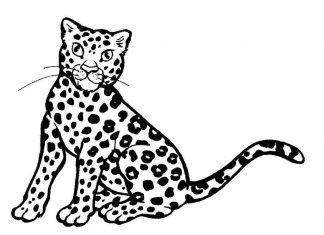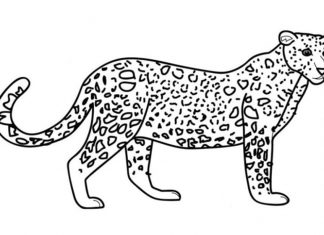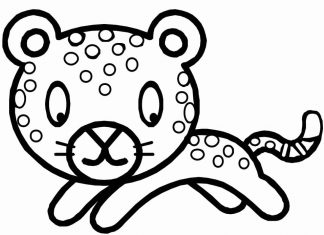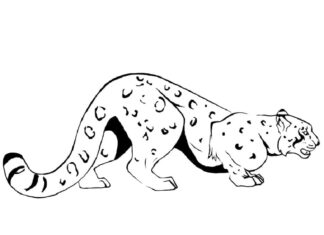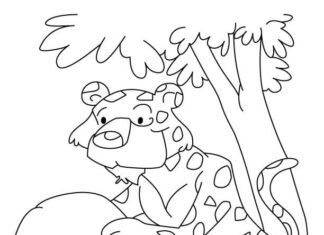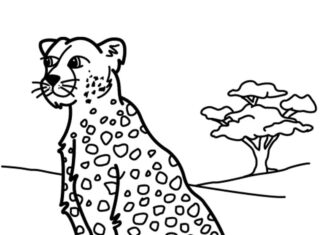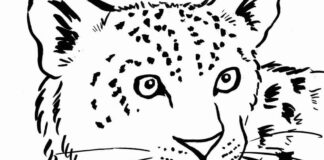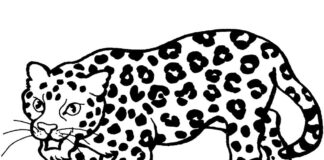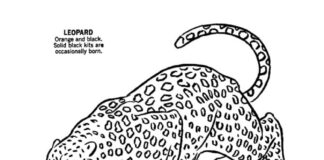The leopard (Panthera pardus) is a large carnivore belonging to the cat family. It is one of five species in the genus Panthera, which also includes the lion, tiger and jaguar, among others. The leopard is found in various regions of Africa and Asia. It is a highly adaptive animal that can live in a variety of environments, from savannas to rainforests. The leopard's appearance can vary depending on the region in which it lives, but in general they have golden yellow fur with distinctive black spots that form a unique pattern. Leopards are excellent predators, able to climb trees, swim and run at high speeds. They are known for their ability to carry prey into trees to avoid other predators. Leopards are now threatened with extinction due to habitat loss, poaching and conflicts with humans.
Leopard Coloring Book
Information
- Occurrence: Leopards are found in various parts of the world, but mainly in sub-Saharan Africa and eastern and southeastern Asia. They are highly adaptive animals that can survive in a variety of environments, from savannas to rainforests and mountains.
- Appearance: Leopards have slender bodies and short legs, golden yellow fur with black spots that form a unique pattern. A leopard's appearance can vary depending on the region in which they live. For example, leopards living in rainforests have darker fur and a denser pattern of spots.
- Feed: Leopards are predators that hunt a variety of animals, from antelope and monkeys to birds and rodents. They can also eat carrion if they cannot find fresh prey.
- Behavior: Leopards are solitary and territorial animals. They mark their territory by urinating and scratching trees. They are nocturnal animals that hunt mainly at night. They are also excellent climbers and often carry their prey into trees to avoid other predators.
- Reproduction: The female gives birth to 1 to 6 cubs after a gestation period of about 90-105 days. Leopard cubs are fed by their mother until they are about 3 months old, and then they begin to hunt on their own.
- Threats: Leopards are currently threatened with extinction due to various factors, such as habitat loss, poaching (due to their beautiful fur and other body parts), and conflicts with humans.
- Sub-genres: There are several different subspecies of leopard that vary in appearance and occurrence. For example, the Amur leopard (Panthera pardus orientalis) is a subspecies that occurs in Russia and China and is critically endangered by extinction.
Trivia
- Variability in appearance: A leopard's appearance can vary greatly depending on the region in which they live. For example, leopards from rainforests have darker fur and denser spots, while those from drier areas have lighter fur.
- Great climbers: Leopards are excellent climbers and can climb trees both for safety and for hunting. They often carry their prey into trees to avoid other predators.
- Hunting at night: Leopards are mainly nocturnal animals and most of their hunting activity takes place after dark.
- Loners: Leopards are solitary animals and spend most of their time alone, unless they are females with cubs.
- Speed: Leopards are very fast and can reach speeds of up to 58 km/h when running.
- Power: Despite their slender build, leopards are very strong and can carry prey weighing up to three times their own.
- Long jump: Leopards can make long leaps - up to 6 meters in length and 3 meters in height.
- Different diets: Leopards have a very varied diet that ranges from large mammals to birds and rodents.
- Different names: The leopard is known by different names in different regions. For example, in North and South America, the leopard is often called the jaguar, although they are different species.
- Threat: Leopards are now classified as an endangered species by the International Union for Conservation of Nature (IUCN), mainly due to habitat loss, poaching and conflicts with humans.

